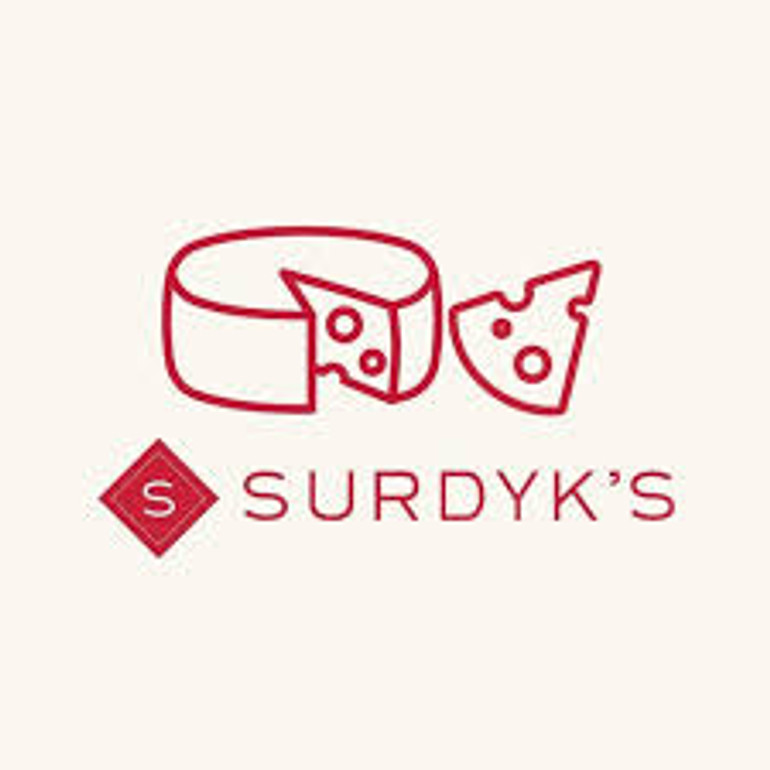We are talking to Sam Johnson, Surdyk's Cheese Guru, about how to build a cheeseboard. While it isn't difficult, it does require a bit of finesse - especially if you want your board to be the best. Follow Sam's tips and tricks and you'll be the star of the cheeseboard show!
How to Build a Cheeseboard

Posted on Sep 2nd 2025
1) Where do you start? What special equipment do you need?
When building the perfect cheeseboard, it’s best to start with the foundation: the board itself. A well-crafted base not only provides a practical surface but also elevates the presentation of your spread. At Surdyk’s, we carry a variety of beautiful options, including locally made Ashwood boards as well as slate and walnut boards from the J.K. Adams Company in Vermont, known for their timeless craftsmanship.
Once you’ve chosen your board, the next step is selecting the right utensils. While nearly any knife will get the job done, the right tools can make the experience feel truly special. For something both functional and elegant, consider the stunning cheese knives made by the renowned French company Laguiole Jean Dubost. If you’d really like to get your cheese nerd on, we also offer specialty knives from Swissmar, thoughtfully designed for different styles of cheese to ensure the perfect cut every time.
(And here’s a little insider tip: cheese knives also make great gifts. Whether for a seasoned host or someone just starting their entertaining journey, they’re both practical and unique—sure to be appreciated long after the last piece of cheese has been enjoyed.)
Cheese signs to label the varieties on your board are another fun way for guests to interact and learn. We have both wood and ceramic options in our shop.
Is there a formula for how much or what type of cheese to serve?
When it comes to building a cheeseboard, variety is key. I like to select three to four distinct cheeses, making sure to balance different textures and styles. A good mix might include something soft and creamy, something firm and nutty, and something hard and robust.
It’s also worth considering milk types. Many people are most familiar with cow’s milk cheeses, but introducing a goat’s milk or sheep’s milk option can add unique flavors and broaden the experience for your guests.
For example, you could start with a creamy, bloomy-rind Brie-style cheese, add a firm yet moist Alpine or Tomme, and finish with a hard, drier clothbound cheddar. Together, these selections create dynamic contrast and keep your board both approachable and exciting.
How much cheese do you really need?
A good rule of thumb is to plan for about 1 to 1.5 ounces of each cheese per person if you’re serving a board as a light appetizer or after-dinner snack. Of course, if your guests are enthusiastic cheese lovers (like my friends and family), feel free to add a little more. There’s never any harm in having leftovers—they make for delicious indulgences later.
What’s the best temperature to serve cheese?
Almost all cheeses are best enjoyed at room temperature, where their flavors and aromas can truly shine. When cheese is too cold, the fats seize up and the tasting notes become muted. Take your cheeses out of the refrigerator at least 30 minutes before serving. And don’t worry—cheese has been around for centuries as a way to preserve milk, so it can comfortably sit out at room temperature for longer than you might expect.
What are the best accoutrements to serve alongside cheese?
This is where you can really get creative—think of it as a “choose your own adventure” moment for your cheeseboard. Charcuterie is always a crowd-pleaser, whether it’s silky prosciutto, speck, salami, aged sausages, or pâtés. Fruit preserves add richness and depth—figs in any form are especially versatile and pair beautifully with almost any cheese. For a little kick, pepper jams are fantastic with creamy or goat’s milk cheeses.
Briny, savory elements also provide excellent contrast to cheese’s richness. Consider olives (we carry a wide selection of varietals) or pickled vegetables for that satisfying tang. Fresh fruit like berries, apples, and pears bring brightness and natural sweetness, while honey drizzled over funky or blue cheeses enhances their complex flavors. The key is to mix and match textures and tastes to keep every bite exciting.
Another tip—and one of my favorite additions to any cheeseboard—is fresh herbs. Thyme, rosemary, even dill: just tuck bunches around and watch how they pull everything together.
Are there any cheese faux pas or etiquette rules to follow?
Not really! The only etiquette worth remembering is to be thoughtful about your company and the kind of experience you want to create. Some guests may prefer adventurous selections, while others might enjoy more familiar flavors. A cheeseboard is meant to bring people together, so focus on being gracious and intentional with your choices.
Still have some questions? Stop into our Cheese Shop—our staff is here to help!
